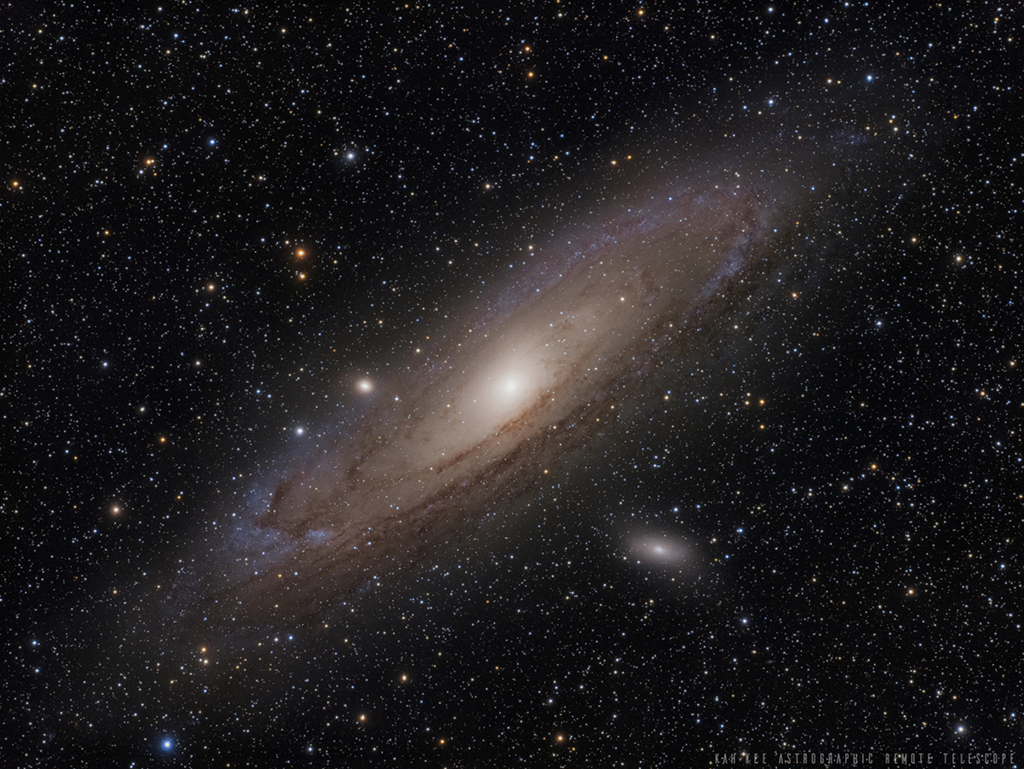2020 April 30
Andromeda Island Universe
Image Credit & Copyright: Yuzhe Xiao
Explanation: The most distant object easily visible to the unaided eye is M31, the great Andromeda Galaxy some two and a half million light-years away. But without a telescope, even this immense spiral galaxy – spanning over 200,000 light years – appears as a faint, nebulous cloud in the constellation Andromeda. In contrast, a bright yellow nucleus, dark winding dust lanes, expansive blue spiral arms and star clusters are recorded in this stunning telescopic image. While even casual skygazers are now inspired by the knowledge that there are many distant galaxies like M31, astronomers debated this fundamental concept 100 years ago. Were these “spiral nebulae” simply outlying components of our own Milky Way Galaxy or were they instead “island universes”, distant systems of stars comparable to the Milky Way itself? This question was central to the famous Shapley-Curtis debate of 1920, which was later resolved by observations of M31 in favor of Andromeda, island universe.
Experts Debate: How will humanity first discover extraterrestrial life?
Tomorrow’s picture: galaxies away
仙女座大星系
影像提供与版权:Yuzhe Xiao
说明: 人类肉眼能轻易见到的最遥远天体是M31 ( 仙女座大星系 ),离我们约二百五十万光年远。不过,如果没借助于望远镜,这个跨幅超过 200,000光年的庞大螺旋星系,看起来只是仙女座的一团不起眼的暗淡弥漫云气。作为对比,在这幅以这个大星系为主题的望远镜影像里,星系明亮泛黄的核心、黝黑蜿蜒的尘埃带、泛蓝的螺旋臂、与泛红的发射星云皆历历在目。虽然现在连一般的观星人,都知道天空中有许多像M31这种遥远的星系,但是近在100年前,天文学家还很正式的辩论过:这些”螺旋星云”是我们银河系的外围结构?或者它们是宇宙岛–宇宙它处类似我们银河系的天体?这个问题,是著名1920年沙普利-柯蒂斯大辩论的中心议题,观测后来排解了这个争论,指出M31是个和我们银河系同位阶的星系。
专家辩论:人类会首先发现外星生命吗?
明日的图片: galaxies away







